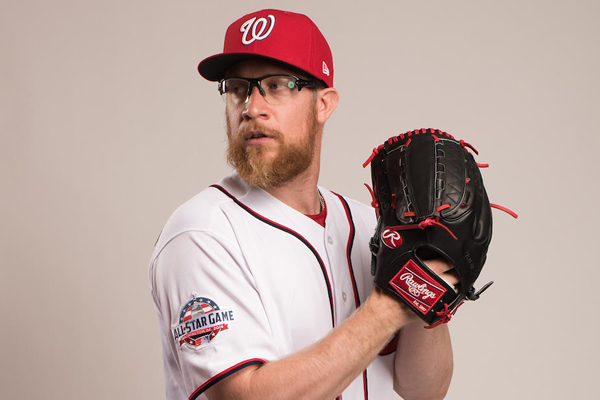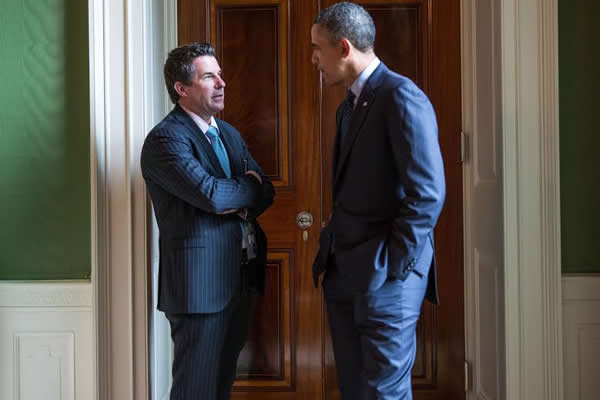a&e features
Sean Doolittle: The all-around All-Star
Nats pitcher, wife on life in D.C., their LGBT advocacy — and whether the team is ready for a gay player

Ace relief pitcher Sean Doolittle was traded from the Oakland Athletics to the Washington Nationals in July of 2017. He eloped with his then-girlfriend, Eireann Dolan one day after the regular baseball season ended last year. Doolittle was named a 2018 All-Star this week; he was a member of the 2014 MLB All-Star team and this season is rounding out to be one of the best of his career.
Doolittle and Dolan received national attention in 2015 when they purchased hundreds of tickets to the Oakland Athletics Pride Night after the event received backlash from fans. The tickets were donated to local LGBTQ groups and an additional $40,000 was raised.
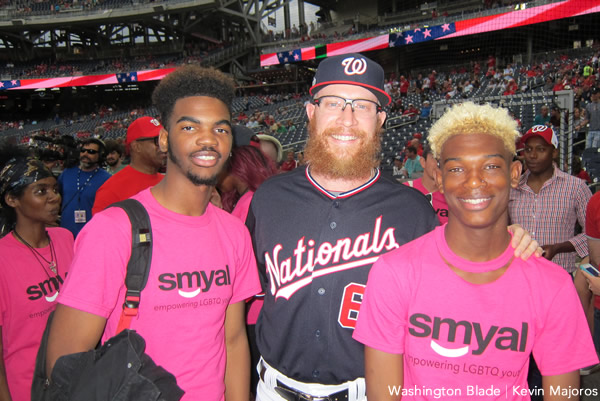
Sean Doolittle on the field with members of SMYAL at Night Out at the Nationals. (Washington Blade photo by Kevin Majoros)
Local LGBTQ youth leadership and housing program, SMYAL, has caught the attention of Doolittle and Dolan and they donated 52 tickets to the organization for Night OUT at the Nationals last month. Going a step further, they stopped in personally to deliver the tickets at the SMYAL youth program’s headquarters and the SMYAL transitional housing program.
The Washington Blade sat down with the couple inside Nationals Park for a conversation about the LGBTQ community, life in D.C., baseball and music.
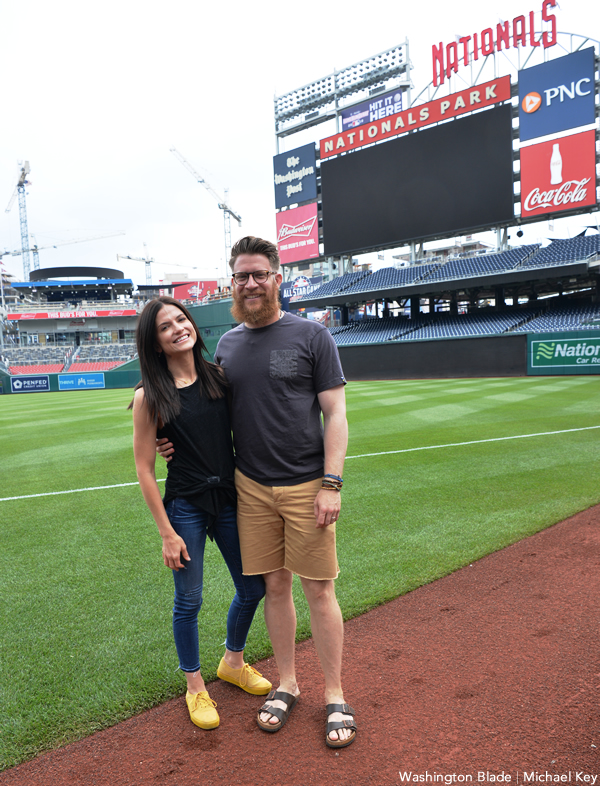
Eireann Dolan and Sean Doolittle (Washington Blade photo by Michael Key)
Washington Blade: You’re both active with charitable causes including work with Syrian refugees and military veterans’ mental health and housing. How did you become interested in the LBGTQ community?
Eireann Dolan: I have two moms. But even if I didn’t, I think this is something that’s really important. It’s always been really important, at least in my family. And something that we’ve always valued is the idea of having an accepting place. Having a sense of home. It factors into all the charity work that we do, all of the community work. We work with the UN Refugee Agency, UNHCR. We’re going to have about 30 refugees coming to the game tomorrow night.
Blade: That’s incredible.
Dolan: Yeah, so we’re going to have them on the field and they are veterans who are injured or widowed. We deal with housing for them. Our theme seems to be a sense of home. Making sure people feel welcome. Whether they’re a refugee, whether they’re a veteran returning or transitioning back into civilian life, or whether they’re somebody in the LGBTQ community who maybe hasn’t considered that sports would be a space for them. We want to make sure that they know it is a space for them. They do have a home here and we accept them as they are. It’s always been really important to us.
Blade: And then you stumbled upon SMYAL here in D.C.
Dolan: We did. Well, it kept getting name dropped to us so many times by so many people.
Doolittle: In advance of the Nationals Pride night, we wanted to get involved. We wanted to do something more than catch the first pitch or meet some people on the field before the game. And we love this community, we love being here, and we wanted to give back. And like she said, in some of the meetings we had with the folks here, with the Nats, SMYAL had been referenced several times. We were able to make a couple visits over there before Pride night.
Dolan: That was incredible.
Doolittle: It’s an incredible organization and the holistic approach that they take, helping with everything from housing to leadership to education to helping people become voices in their communities.
Dolan: That was the biggest thing, I think.
Doolittle: And then coming back. They go through the program and then they come back to SMYAL to give back and pay it forward. That was something that we found to be incredibly inspiring. And if, through this process, we can lift their voices up and help tell their stories, that’s what we’re trying to do.
Blade: Do either of you have any thoughts as to why Major League Baseball has never had an openly gay player? There seems to be upper management support, team player support and fan support.
Dolan: There’s a lot of hesitation for any athlete, and baseball particularly, to share a lot of their private life, just full stop. Baseball is a bit more buttoned-up. The players themselves are not marketed in such a way, or they don’t maybe market themselves in such a way that talks about their personal life. You look at basketball, you look at football, you look even at hockey. You know the spouses. You know the families. You know what they do. You know where they’re from. But in baseball, it’s a little bit different. I think that may contribute to it, but that, I don’t think is the answer entirely.
Doolittle: I do think there is growing support, like you talked about. I think Major League Baseball’s taken steps towards it. I still think there are steps that need to be made in educating more people. I think as we continue to make it a better space, a more accepting space, we can continue to get rid of all this toxic masculinity bullshit that happens in a locker room.
Blade: Does it happen here with the Nationals?
Doolittle: Of course it happens. It’s performative. Sometimes that’s a guy’s way of psyching themselves up to go play. But I think we’re seeing less and less of it, and it’s fallen by the wayside. We just need to be continuously focused on creating a space that’s accepting. When you’re with these guys in such close proximity over six, eight months over the course of the season, guys should be OK with being themselves. Whether it’s you’re gay or whether it’s a different religion, or you’re from a different country. We have guys in here from how many different countries? How many different religious backgrounds? So I think just continuing that evolution in the clubhouse.
Dolan: That sports era of the ’90s, early 2000s of hyper-masculine, almost borderline toxic masculine, alpha, humiliate your opponent, keep your head down, don’t look like you’re having fun. That’s waning because fans want fun. They like the back flips. They like the personality. And you’ve got guys out there, you’ve got little pockets of people showing their personality.
Blade: Do you think this team is ready for a gay player?
Doolittle: I don’t know. And that’s the thing, I don’t think we’re going to know until that happens. I wish I had a better answer.
Dolan: I think baseball is ready and I think clubhouses know if a guy can help your team, period, the end. Doesn’t matter.
Blade: What’s your take on the NFL’s anthem protest?
Dolan: It’s not an anthem protest, that’s my first thing. They’re not protesting the anthem, they’re protesting the violence against young African-American men, particularly.
Doolittle: I think the NFL’s response was incredibly dangerous and disgusting. You’re punishing guys by policing peaceful protesting. I think it sends a really bad message across the United States.
Dolan: And if you say no politics in sports, then how do you explain flyovers that you do before games? How do you explain all the active recruiting that they do for the military during games? Why are we picking and choosing? When you’re telling young African-American men, “We want to watch you, we want to watch you do this particular thing, but don’t talk,” that just smacks of something that I thought this country had moved past.
Doolittle: I think it could have been a relatively short-lived story with a much better ending if, initially, they had focused their energies on listening and trying to figure out a way to get guys to stand. So when Kaepernick starts kneeling, they start listening to his message. They help him get involved to focus that message into action in the community. And soon enough, we have guys that are proud to stand up for the anthem because they’re helping their communities and bettering people and remedying the situation. And I think, unfortunately, it’s been used as something in this culture war that we’ve seen. These guys have done a lot of incredible work in their communities. They’ve met with government officials, they’ve done a lot of outreach with law enforcement in their communities. They are backing it up with significant action. So I wish everybody felt good enough and proud enough to stand for the anthem without being told that they had to do so.
Blade: Would you go to the White House if the Nats win the World Series?
Doolittle: People have asked me that before, and you don’t get to answer that question unless you win the World Series
Dolan: We’ll talk to you in October.
Blade: As a relief pitcher, you’re either the hero or the goat. How do you deal with that on a daily basis? Do you have stress techniques?
Doolittle: I’ve gotten a lot better at it over the last couple years. Early in my career, I pitched with a lot of emotion and I put a lot into, like you said, whether you’re the hero or the goat in that scenario. There’s no gray area in that line of work. There’s no, well I thought I executed my pitches really well, I just didn’t get the results I wanted. That’s not a great consolation prize for you or the other 24 guys on your team.
Dolan: And the fans don’t want to hear it.
Doolittle: Yeah, and it’s tough to explain that away. I was very attached to how I was pitching, and if I was getting the job done. If I didn’t get the job done, that was a blow to my self-esteem. Over the last few years, I worked a lot at processing the outings, mentally preparing for the outings, changing the way that I use that energy. I used to pitch with a ton of emotion. Now, I use the energy to hyper focus. I want to calm things down. I want things to be slow and smooth.
Dolan: You’re very Zen.
Doolittle: I think it’s helped me manage a lot of that stress. It’s not always easy, but it’s an occupational hazard.
Blade: Your stats this year are amazing and…..
Dolan: Don’t say them, don’t say them, don’t say them.
Blade: All right. Don’t say them out loud?
Dolan: No. We’re very superstitious.
Blade: Are the stats that shall not be named a result of your comfort level in D.C. or are you doing something different in training?
Doolittle: I feel very comfortable in D.C. We love it here. I changed some things. But a lot of it was behind the scenes. We changed a lot with the arm care program that I have. I dealt with some shoulder injuries in the past, when I was with Oakland, and I missed some time on the disabled list, and I think sometimes, just getting a fresh set of eyes or a new way of explaining things, really helps. And we added some things to that program, to the daily routine. I feel strong. I feel, at this point in the season, even with the work load I’ve had, I feel really good about where my body’s at, and I think when you don’t have to worry every day about, how’s my arm going to feel when you come to the field, you can throw yourself into focusing on your outing and who you might face rather than focusing on trying to get your body ready to pitch. So that’s been a load off my shoulders, pardon the pun.
Dolan: Did you catch the eye roll on the recording? Was it loud enough?
Blade: You had an unusual path to becoming an MLB relief pitcher. You pitched growing up and also played first base at University of Virginia. And then, you were drafted by the Oakland Athletics as an outfielder and a first baseman. Is this where you were supposed to be the whole time? There was a little side path.
Doolittle: I feel like it is. It’s a lot easier for me to say this now, but I’m glad I went through that transition process. There were some really dark times. I missed three full seasons on the disabled list in the minor leagues.
Dolan: So close to getting a call up, too. He was right on the cusp.
Doolittle: And before I got hurt the first time in 2009….
Blade: As a first baseman?
Doolittle: As a first baseman, yeah. It’s totally shifted my perspective on everything. This almost didn’t happen at all. In 2011, I had contacted my agent to go back and try and figure out the process of re-enrolling in college, because I was that far at the end of my rope. And the A’s came to me and said, “Hey, would you like to think about pitching?” I joke that I took the scenic route to the big leagues. It makes me appreciate every day that I get to wear that little logo on the back of my hat that says I’m in the big leagues. It came really close to never happening.
Dolan: There’s something to be said about having experienced adversity and failed. I don’t think I would be with him if he was this super successful player. I don’t think I would have been drawn to him.
Doolittle: Right, you learn a lot of humility, you learn a lot about yourself.
Dolan: Yeah. If you’d been that first round pick that you were, superstar first baseman….
Doolittle: I was the man.
Dolan: You were the man.
Blade: You prefer him damaged?
Dolan: That’s right up my alley. Who else is going to humble him, honestly?
Blade: What are you liking about living in D.C.?
Doolittle: It’s an awesome city. There’s a good energy, there’s a creative energy, it’s very diverse, it’s very accepting. The sense of community, the pride of being from D.C., that’s a thing that we found that I think was really cool. There’s a lot that we like about it.
Dolan: It’s amazing. We love the local bookstores and local record shops. We love just discovering new, cool spots that we can hit up every time we have a spare hour or so.
Blade: What about the excitement of MLB All-Star Week being in the town where you’re now pitching?
Doolittle: I think it’s awesome. I think us players, we’re starting to feel that buzz and that energy surrounding it. I’m excited for the Nationals fans and the organization, because they’ve done everything so first class. There’s a good energy surrounding D.C. sports now, and I think to bring the best players from around baseball here to D.C., that’s going to be really cool.
Blade: Has the Stanley Cup win by the Washington Capitals affected the team in any way?
Doolittle: We definitely followed it as a team. Before or after our games, whenever the Caps were playing, the TVs in the clubhouse were on. We were following it on our phones, or any chance we could, we were watching the game. We were all in, and I think it was great for us because they gave us the blueprint. They showed us how it’s done. They’ve had a similar storyline. They’ve had to answer a lot of the same questions we’ve had to answer after having really successful, regular seasons, but not making the deep run into the playoffs. They’ve had to answer the questions, is this the year you get over the hump? How are you guys going to break through?
So to see them do it, and to see them break through and not stop, and keep going. It was really fun. And when they came here, that was the biggest thing that they said. It was really cool to share that experience, just for a little bit, with the Cup, in the locker room and on the field.
Even though it’s a different sport, that energy, you can feel it. We’ve had Champagne celebrations before, and once you get a taste of that, you want more. And that’s really motivating, to have another team in your city bring in a trophy like that.
Dolan: And to see the parade and the reaction from the fan base. This is a sports city. And I don’t think people give it enough credit for being the sports city that it is. It was a nice taste.
Blade: Sean, you are a Star Wars fan and your Twitter handle is Obi-Sean Kenobi. Was the Solo movie a win or lose for you? Did you go in costume?
Doolittle: I loved it and we didn’t go in costume this time. We were in Miami, so we were on the road. But we did see it opening night.
Dolan: It was really hot there; a Chewbacca costume would have been difficult.
Doolittle: Yeah. And I don’t know if I can pull off a Princess Leia bikini.
Dolan: Not to say we haven’t tried. There’s your cover picture.
Blade: What’s on your music playlist right now?
Doolittle: I’m a metalhead. I was raised on the sounds of Black Sabbath and Ozzy, AC/DC and Metallica, and my love for it grew from there. When we were kids, we would be going to a Little League game. I’d be nine years old and we were rolling up in the minivan, blasting Black Sabbath.
Dolan: Oh, bad, bad. Love it.
Doolittle: There’s a band from Texas called Power Trip. They’re new but their sound is very ’80s thrash, which I really dig. There’s another band call Chemist. It’s called doom metal. It’s a lot slower and they have some good stuff. I really only listen to it when I’m at the field. When we’re at home, it’s a lot more mellow.
Dolan: We’re pretty eclectic at home. It’s not all metal for us. We like a lot of the new Nashville sound. I’m not a huge country fan, but Sturgill Simpson and….
Doolittle: Jason Isbell.
Dolan: And Colter Wall, yeah. A lot of that is really good. And I love hardcore gangster rap, honestly. I’m not going to lie, it’s my weakness. When he’s pitching, I put on noise canceling headphones and blast gangster rap. Tupac or Biggie, and it works. It calms my nerves because there’s something about it.
Blade: There are nerves for you while he’s pitching?
Dolan: I don’t watch, no. I haven’t watched him pitch live in years. I’m too superstitious.
Blade: Give me a quirk about the other person that makes you laugh.
Doolittle: Oh my god.
Dolan: He has a tactile thing about mesh.
Doolittle: It’s very soft.
Dolan: He likes to touch mesh.
Doolittle: Quirks that make me laugh….
Dolan: Careful, careful.
Doolittle: Well the aforementioned noise canceling headphones, she likes them so much that she’s taken to wearing them in the shower.
Dolan: They’re large speakers and I have three separate shower caps.
Doolittle: She took 45 minutes in the bathroom recently and I was like, what is going on? I was knocking on the door. She didn’t hear me.
Dolan: I bought a deep conditioner mask. Listen, this hair doesn’t get like this on its own.
Blade: Sean, we need to get you to practice. Let’s grab a photo first.
Dolan: Cool.
Doolittle: Oh, cool.
Dolan: All right. Don’t forget your dry cleaning, Sean. We want that front and center in frame.
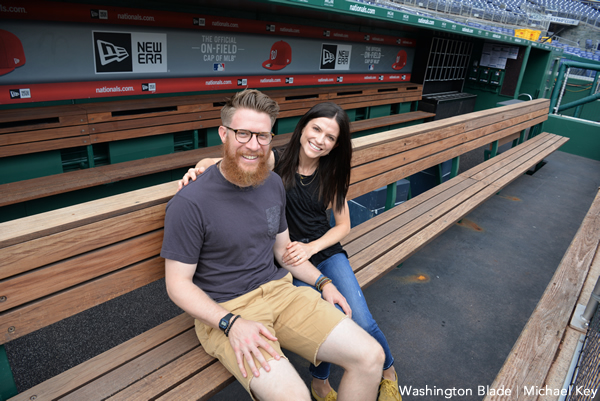
Sean Doolittle and Eireann Dolan (Washington Blade photo by Michael Key)
a&e features
Have yourself a merry John Waters Christmas
Annual holiday show returns to Alexandria and Baltimore
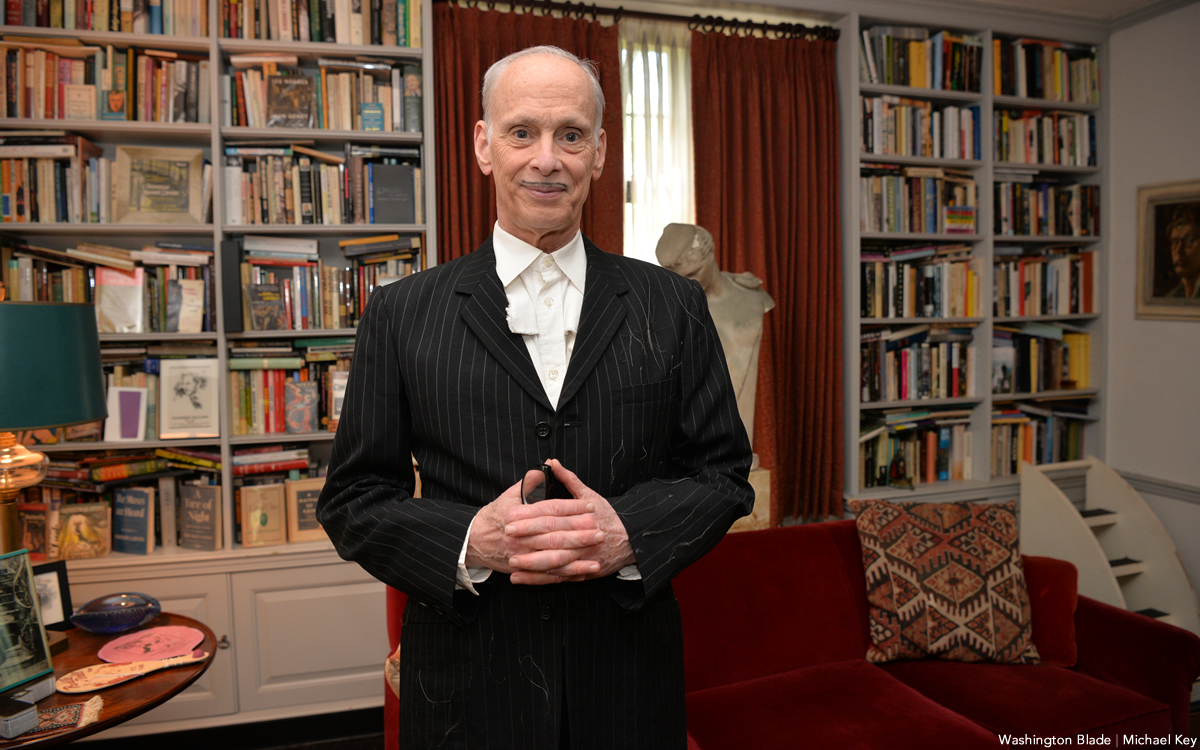
When it comes to iconic Christmas scenes in movies, none can top the tree-toppling tantrum thrown by cha-cha heels-deprived Dawn Davenport in John Waters’s fifth full-length feature “Female Trouble” from 1974. Therefore, it’s not surprising that Waters continues to make art out of Christmas, performing his spoken word Christmas tour in cities across the country. Waters has even more reason to celebrate with the release of his new red vinyl 7” single, a cover of Little Cindy’s “Happy Birthday Jesus (A Child’s Prayer)” on the A-side, and “A Pig Latin Visit From St. Nicholas” on the B-side. If you’re still looking for unique Christmas gifts, consider this record. As always, John was kind enough to make time for an interview in advance of his tour dates.
BLADE: John, in preparation for this interview with you, I went back and listened to Little Cindy’s original rendition of “Happy Birthday Jesus (A Child’s Prayer)” on your “A John Waters Christmas” CD.
JOHN WATERS: One thing I did, if you notice, I make the same stumble in my recording that she did in the original.
BLADE: It sounded to me like she got choked up.
WATERS: No, I think she just stumbles over a word, so I stumbled over the same word. It’s appropriation, insanely.
BLADE: Is this a song you first became aware of in your youth or when you were an adult?
WATERS: When I was doing the Christmas album, I had this friend named Larry Benicewicz. He was kind of my idea man with music. He knew every single old record. I would say to him, “Weird Christmas songs,” when we were doing a soundtrack, or a song about bears, or a song about this, and he would give me all these tapes. It was one of the ones he played for me. A lot of the songs I put in my movies and on my records, I did know as a kid. I did not know this one, but I immediately embraced it. I don’t think it’s campy. I think it really is spiritual in a weird way. My doing it makes it a novelty record. I am really for novelty records, and there aren’t any anymore. Why was there not a COVID novelty record? That’s insane. The dance “The Bug” that’s on the “Hairspray” soundtrack would be perfect for COVID.
BLADE: The thing that struck me was that for a Christmas song in the voice of a child, a kind of death pall hangs over it, with lines like, “If I was good you’d let me live with you” and “they nailed you to the cross, they wanted you to die.”
WATERS: All of it! When I see children at midnight mass kneeling in front of a nude man nailed to a cross, I feel like I’m at The Eagle! It is S&M, it’s creepy. I took the same cover (photo) from her record to parody and put my face on it. The same thing I did with The Singing Dogs last year when I covered (their version of) “Jingle Bells.” I’m really into novelty records. I love them and I’m trying to bring them back. I don’t expect anybody to ever play these records. Even The Singing Dogs one said on it, “Please do not play this record” [laughs]. And the flipside, the Pig Latin version, is almost impossible to listen to.
BLADE: I’m so glad you mentioned that. “A Pig Latin Visit From St. Nicholas” reminded me of the lost art of speaking in Pig Latin. I also recall watching the PBS series “Zoom” as an adolescent and learning to speak “ubbi dubbi,” a distant relative of Pig Latin. Do you think that the time is right for a Pig Latin or ubbi dubbi revival?
WATERS: Here’s the thing, I never could pick up any language, except Pig Latin. I’ve been in every foreign country. Foreign countries have given me money to learn to speak the language. I can never do it! But Pig Latin…my parents and other parents in the ‘50s spoke Pig Latin so kids couldn’t understand what they were saying. Then my mother taught it to me, and I used it. The hardest take to shoot in “Pink Flamingos” was not eating the dog shit. It was when the cast skipped, in one take, saying “E-way, are-yay e-they ilthiest-fay eople-pay in-hay e-they ole-hay ide-way orld-way.” We’re the filthiest people in the whole wide world in Pig Latin. We had to do so many takes so they could do it once without screwing it up. In “Polyester,” Edith (Massey) answers the phone, “ello-hay.” I did a photo piece where it was all subtitled in Pig Latin. Like “osebud-Ray” (from “Citizen Kane”) or in “Streetcar,” “ella-Stay!” [Laughs] All the iconic dialogue translated into Pig Latin. My assistant who helped me do it, had never heard of Pig Latin. She really got good at it because she lived in many foreign countries and can pick up languages. But it’s not that easy to do it correctly and read it. Your computer will translate into Pig Latin.
BLADE: AI understands Pig Latin?
WATERS: I guess that’s AI. It wasn’t 100% right, but it was close. I can speak it if I look at it, but just do a bit at a time. It was a challenge that no one would possibly care about or want to do.
BLADE: I think you pulled it off very well.
WATERS: If you want people to leave on Christmas morning, you put it on. That’s how you get your guests to leave. It’s time to go.
BLADE: Ood-gay i-bay! How did your relationship with record label Sub Pop, which released 2021, 2022, 2024, and new 2025 holiday singles, come about?
WATERS: I believe the first thing I did for them was “Prayer to Pasolini.” They came to me through Ian Brennan. He’s won a couple Grammys for World Music, but he is also is one of my agents who does the Christmas tour and a lot of my shows, anything with music. He helped me arrange each one of the songs. He had a relationship with Sub Pop. It was perfect. My friends in Baltimore, (the band) Beach House, have had huge success.
BLADE: That’s right, they’re on Sub Pop!
WATERS: Yes! I’m happy to be on it. I’ve even been to the warehouse and posed for pictures like Jackie Suzanne used to do.
BLADE: Is there any chance that “A John Waters Christmas” might be reissued on vinyl by Sub Pop?
WATERS: No. It’s such a nightmare to get the rights and to renew them. You have to find the publisher and the writer, and they usually hate each other. It doesn’t matter if it’s obscure or famous, it’s hard to get. You have to make the deal. The singer doesn’t get anything unless they play it on the radio. It would be so complicated legally, and there would be such a [laughs] tiny audience for it. I hope it will come out again. The same thing with the one for Valentine’s Day. I had two of them that did quite well when they came out; “A Date With John Waters and “A John Waters Christmas.” The “John Waters Christmas” album is still the soundtrack that plays whenever I’m doing my spoken word Christmas show as people are entering the theater.
BLADE: Aside from your annual Christmas show tour, what else do you do for the holidays now, and are there any traditions that you’ve carried over from your family?
WATERS: Certainly! I have two sisters, my brother’s widow, and me, so there are four and we take turns each year to have the Christmas dinner. Mine was last year. An entire sit-down dinner. Mom’s China, the silverware, the entire full dinner. It’s pretty traditional. I don’t have a Christmas tree, but I do decorate the electric chair from “Female Trouble.” That is a tradition in my family. We do have Christmas decorations, but they’re usually weird ones that fans sent me. I have one with Divine knocking over the Christmas tree, and the Christmas tree lights up, all sorts of amazing things. There is definitely a tradition here that might be a little altered, but it is definitely a tradition. I used to have a giant party every year, but COVID ended that. I still wouldn’t want 200 people in my house breathing right now.
BLADE: I was looking at your tour schedule and wondered if there are any new cities in which you’ve never performed the John Waters Christmas show that have been added to this year’s schedule?
WATERS: I don’t think there’s a city in America in which I haven’t done one show! The only places I haven’t been to are Hawaii and Alaska. I could do it there, but it’s too long on a tour. I can’t think of a city I haven’t played in in America over the last 50 years. The Christmas show is completely different every year. It doesn’t matter if you saw it last year.

Some gifts scream practical, others whisper luxury, and a few flat-out blur the lines. From cocoa that feels ceremonial to a cologne that linger like a suggestive smirk, this year’s ultimate gift picks prove that thoughtful (and occasionally naughty) presents don’t have to be prosaic. Welcome to your holiday cheat sheet for festive tangibles that get noticed, remembered, and maybe even result in a peck of gratitude planted under the mistletoe. Consensually, of course.
Amber Glass Champagne Flutes
Pop the champs – but make it vintage. These tulip-shaped stunners in amber-tinted glass bring all the Gatsby vibes without the Jazz-age drama. Whether you’re toasting a milestone or celebrating a Tuesday, their seven-ounce capacities and hand-wash-only care make ‘em as practical as they are pretty. Pair with a thoughtful bottle of bubs and gift with a glittering wink. $18, NantucketLooms.com
Disaster Playbook by Here Comes the Apocalypse
Because the end of the world shouldn’t be a solo act, this spiral-bound guide is your step-by-step roadmap to surviving and thriving when everything else goes sideways, which might be sooner than you think. Packed with checklists, drills, and a healthy dose of humor, it’s like a survival manual written by your most prepared (and slightly snarky) friend. Whether you’re prepping for a zombie apocalypse or, more realistically, REVOLUTION!, this playbook’s got your back. $40, HereComesTheApocalypse.com
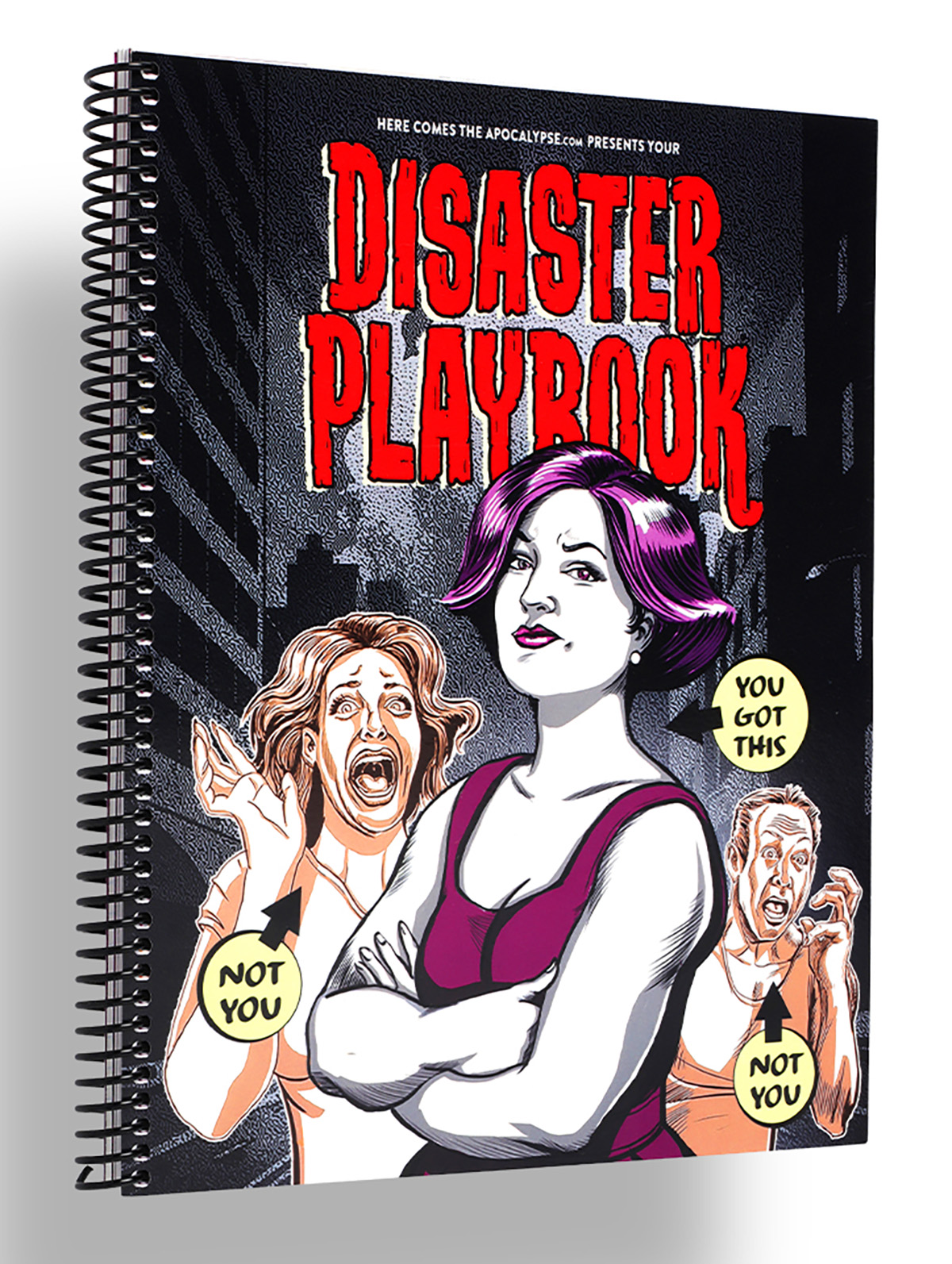
Wickless Vulva Candles
Bold, luxurious, and completely flame-free, CTOAN’s wickless candles melt from beneath on a warmer, releasing subtle, sophisticated fragrances, like sandalwood or lavender. The vulva-shaped wax adds a playful, provocative element to any space –perfect for a bedroom, living room, or anywhere you want elegance with an edge. A gift that celebrates form, intimacy and self-expression, no fire required. $39, CTOANCO.com
Villeroy & Boch Royal Classic Christmas Collection
Every meal is a mini celebration – with whimsy at every place setting – in Villeroy & Boch’s Royal Classic festive dinnerware collection that hits all the right notes. Made from premium German porcelain, it features nostalgic little toys, nutcrackers, and rocking horses in delicate relief, giving your holiday spread a playful but refined twist. Dishwasher- and microwave-safe, it’s luxe without the fuss. Gift a piece to a special someone, or start a collection they’ll use (and show off) for years to come. $22-$363, Villeroy-Boch.com
Greenworks Electric Lawnmower
You a ’hood queen who considers lawn care performance art – or just wants to rule the cul-de-sac in quiet, emission-free glory? Greenworks’ zero-turn electric mower has the muscle of a 24-horsepower gas engine but none of the fumes, drama or maintenance. Six 60V batteries and a 42-inch deck mean you can mow up to two-and-a-half acres on a single charge – then plug in, recharge, and ride again. It’s whisper-quiet, slope-ready, and smooth enough to make you wonder why you ever pushed anything besides your queer agenda. The perfect gift for the homeowner who loves sustainability, symmetry, and showing off their freshly striped yard like that fresh fade you get on Fridays. $5,000, GreenworksTools.com
Molekule Air Purifier
For the friend who treats their space like a sanctuary (or just can’t stand sneezes), the Molekule Air Pro is magic in motion. Covering up to 1,000 square feet, it doesn’t just capture allergens, VOCs, and smoke – it destroys them, leaving your air feeling luxury-clean. FDA-cleared as a Class II medical device, it’s serious science disguised as modern design. Gift it to your city-dwelling, pet-loving, candle-burning friend who likes their living room as pristine as their Instagram feed. $1,015, Molekule.com
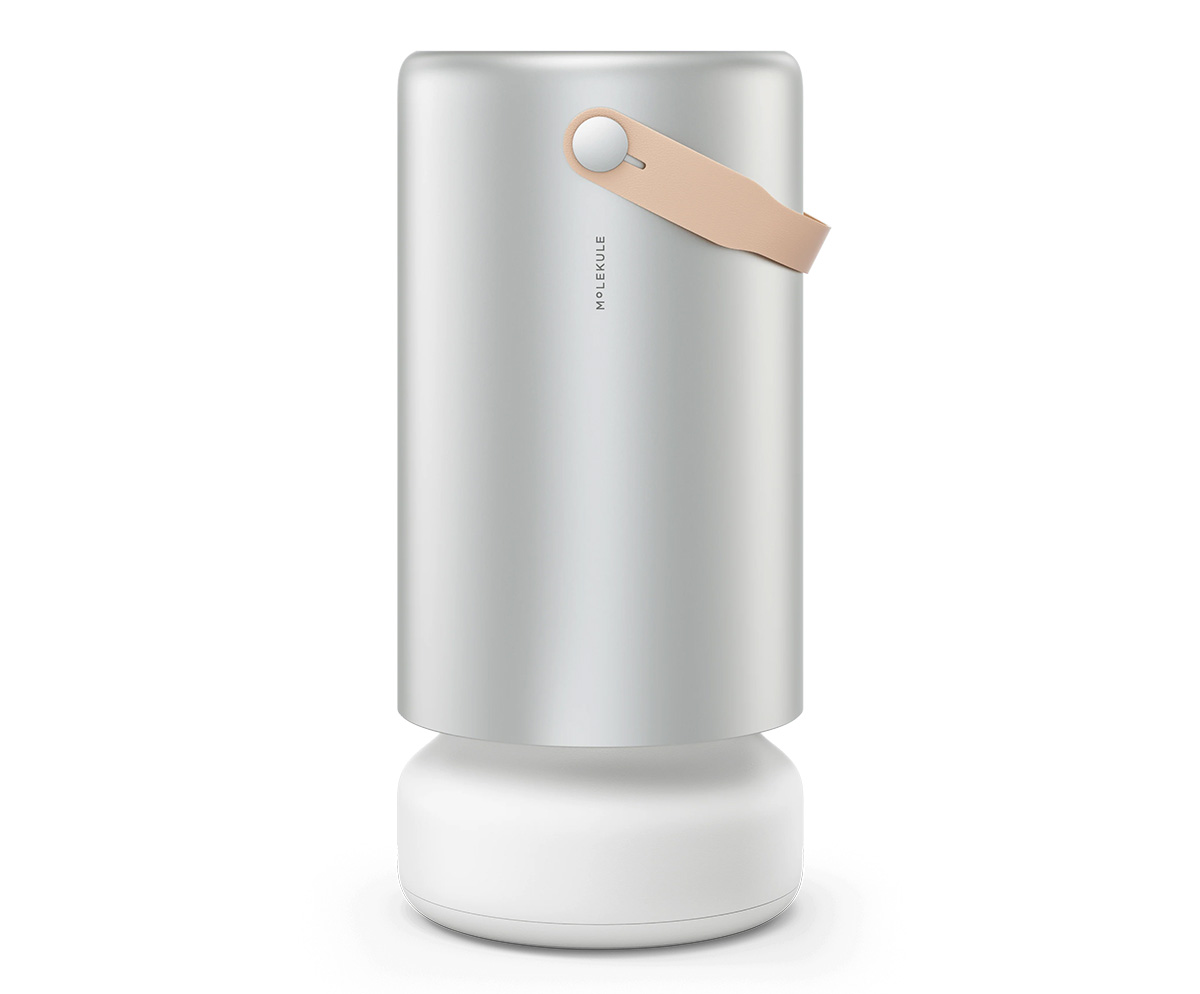
Cipriani Prosecco Gift Set
Effervescent with stone-fruit sweetness and a touch of Italian flair, the Cipriani Bellini & Prosecco gift set brings brunch-level glamour to any day of the week. The Bellini blends rich white-peach purée with sparkling wine, while the dry ’secco keeps things crisp and celebratory. Pop a bottle, pour a flute, and suddenly winter weeknights feel like a party – even with your pants off. $36, TotalWine.com
Woo(e)d Cologne
British GQ recently crowned Woo(e)d by ALTAIA the “Best Date Night Fragrance,” and honestly, they nailed it. Confident without being cocky – smoky gaïac and Atlas cedarwood grounds the room while supple leather and spicy cardamom do all the flirting – it’s a scent that lingers like good conversation and soft candlelight. Gift it to the one who always turns heads – or keep it for yourself and let them come to (and then on) you. $255, BeautyHabit.com

Lococo Cocoa Kit
Keep the run-of-the-mill mugs in the cabinet this Christmas and pull out Lococo’s handcrafted Oaxacan versions that demand you slow down and sip like it matters. Paired with a wooden scoop, rechargeable frother, and Lococo’s signature spice hot-chocolate blend (vegan, gluten-free, with adaptogenic mushrooms), this holiday kit turns Mexi-cocoa into a mini ritual you’ll look forward to. Perfect for anyone who loves a little indulgence with a side of ¡A huevo! energy.
Manta Sleep Mask
Total blackout, zero pressure on the eyes, and Bluetooth speakers built right into the straps, this ain’t your mama’s sleep mask — but it could be. The Manta SOUND sleep mask features C-shaped eye cups that block every hint of light while ultra-thin speakers deliver your favorite white noise, meditation, or late-night playlist straight to your ears. With 24-hour battery life, breathable fabric, and easy-to-adjust sound, it turns any bed (or airplane seat) into a five-star sleep suite. Perfect for anyone who treats shut-eye like an art form (or just wants to escape their roommate’s late-night bingin’ and/or bangin’). $159, MantaSleep.com

Shacklelock Necklace
Turn the industrial-chic vibe of a shackle into a sleek statement. Mi Tesoro’s platinum-plated stainless-steel necklace sits on an 18-inch wheat chain, featuring a shackle-style latch pendant that’s waterproof, tarnish-free, and totally fuss-les. Beyond style, it nods to a classic gesture in the queer leather community: replacing a traditional Master lock with something elegant to quietly signal belonging to someone special. Wear it solo for a minimalist edge or layer it like you mean it; either way this piece locks in both your look and your intentions. $90, MiTesoroJewelry.com
Parkside Flask Mojave Edition
Wine nights get a desert glow-up with Parkside’s limited-edition 750-milliliter all-in-one flask draped in sun-washed bronze and badland hues like sage, sand, and terracotta – with magnetic stemless tumblers that snap on for effortless shareability. It keeps your vino chilled for 24 hours, pours without drips (no tears for spilled rosé, please), and even lets you laser-engrave your own mantra or inside joke. Perfect for picnics, surprise rooftop clinks, or gifting to your favorite wine (or desert) rat. $149, HighCampFlasks.com
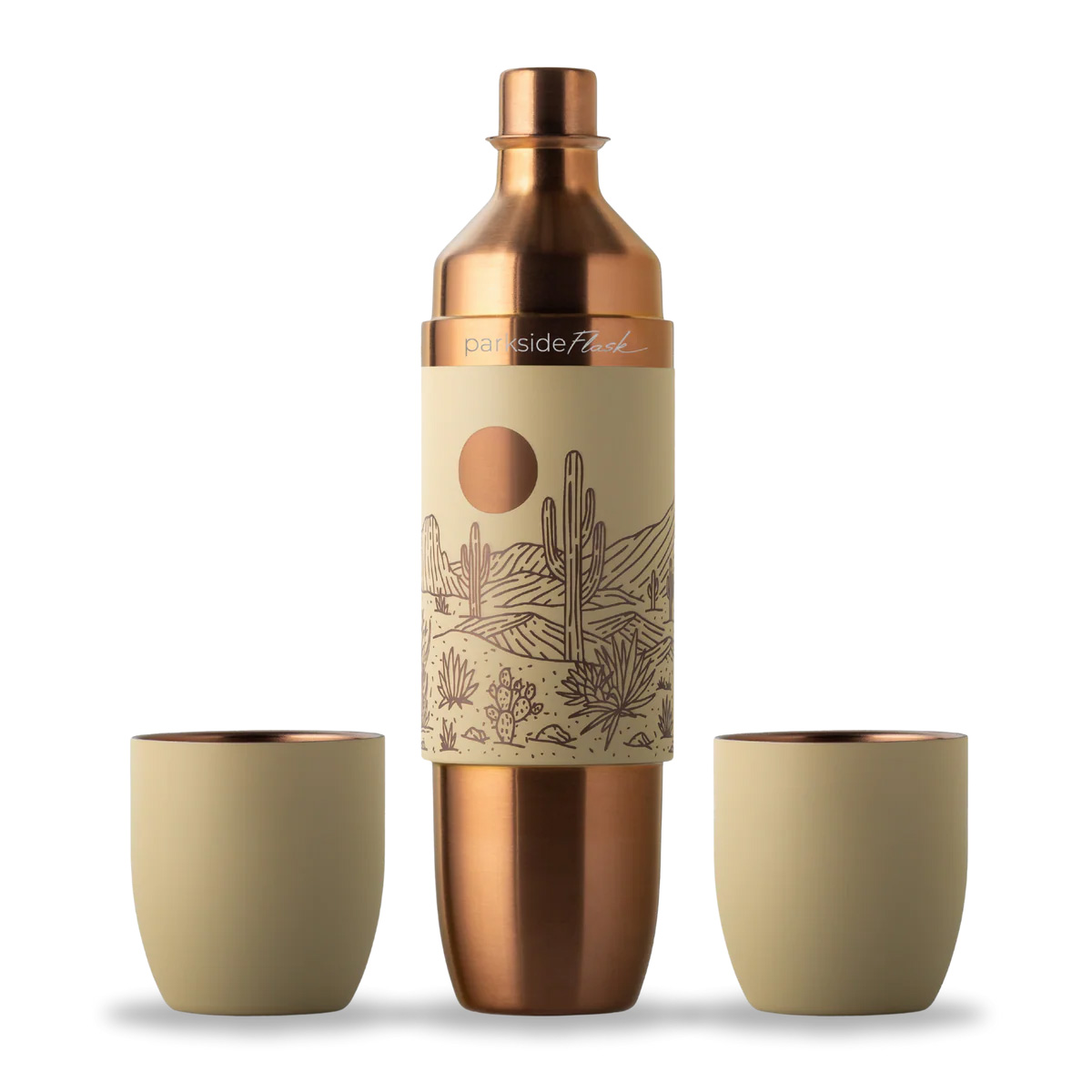
Mikey Rox is an award-winning journalist and LGBT lifestyle expert whose work has published in more than 100 outlets across the world. Connect with him on Instagram @mikeyroxtravels.
a&e features
Meet Mr. Christmas
Hallmark’s Jonathan Bennett on telling gay love stories for mainstream audiences
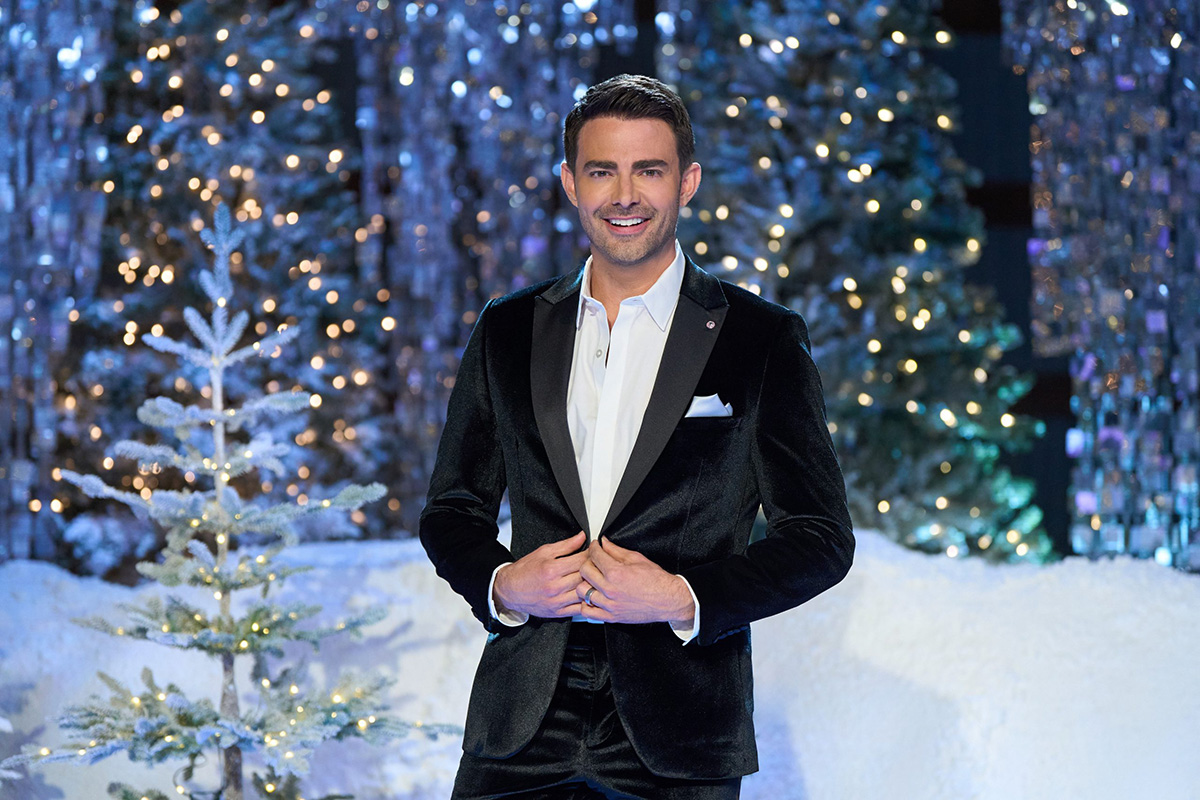
Jonathan Bennett believes there are two kinds of people in the world — those who love Hallmark movies and liars. And in Season 2 of Finding Mr. Christmas, which the Mean Girls star co-created with Ben Roy, Bennett is searching for Hallmark’s next leading man.
“It’s so fun for people because everyone in their life has someone they know that they think should be in Hallmark movies, right? The UPS driver, the barista at the coffee shop, the dentist,” Bennett says. “So we’re testing their acting abilities, we’re testing who they are, but we’re also looking for that star quality — the thing that makes them shine above everyone else. It’s almost something you can’t explain, but we know it when we see it.”
Season 2’s cast includes a former NFL player for the Green Bay Packers, a few actors, and a realtor. The 10 men compete in weekly festive-themed acting challenges, one of which included having to ride a horse and act out a scene with Alison Sweeney. The contestants were chosen from a crop of 360 potential men, and Bennett gives kudos to the show’s Emmy-nominated casting director, Lindsay Liles (The Bachelor, Bachelor in Paradise).
“She has a tough job because she has to find 10 guys that are going to be good reality television, but also have the talent to act, carry a scene, and lead a Hallmark movie eventually,” he says. To be the right fit for a Hallmark leading man, Bennett singles out five key characteristics: you have to be funny, charming, kind, have a sense of humor, and you have to do it all with a big heart.
Of course, Finding Mr. Christmas wouldn’t be Finding Mr. Christmas without its signature eye candy — something Bennett describes as “part of the job” for the contestants. “I can’t believe Hallmark let me get away with this. I dressed them as sexy reindeer and put them in harnesses attached to a cable 30 feet in the air, and they had to do a sexy reindeer photo shoot challenge,” he says with a laugh. “This season is just bigger and bolder than last. People are responding to not only all the craziness that we put them through, but also comparing and contrasting the guys in their acting scenes when we do them back-to-back.”
Season 1 winner Ezra Moreland’s career has been an early testament to the show’s success at finding rising talent. On seeing the show’s first winner flourish, Bennett says, “Now to watch him out in the world, just booking commercial after commercial and shining as an actor and a model, I think the show gave him the wings to do that. He learned so much about himself, and he took all that into his future auditions and casting. He just works nonstop. I’ve never seen an actor book more commercials and modeling gigs in my life.”
Bennett has been a star of plenty of Hallmark movies himself, including the GLAAD-award-winning The Groomsmen: Second Chances, which makes him a fitting host. Among those movies are 2020’s Christmas House, which featured the first same-sex kiss on the network and had a major impact on Bennett’s career as an openly gay man. “Hallmark’s been so great about supporting me in queer storytelling. But again, I don’t make gay movies for gay audiences. I make gay love stories for a broad audience, and that’s a huge difference, right? We’re not telling stories inside baseball that only the gay community will understand.”
He continues, “The backdrop of a Hallmark Christmas movie is very familiar to these people who watch. And so when you tell a gay love story, and you tell it no differently than a straight love story in that space, they’re able to understand. It’s able to change hearts and minds for people who might not have it in their lives.”
While Hallmark has become a major staple of Bennett’s career, he started off wanting to be a Broadway actor. And before the first season of Finding Mr. Christmas aired, Bennett took a break from TV to make his Broadway debut in Spamalot, replacing Michael Urie as Sir Robin and starring alongside Ethan Slater and Alex Brightman.
“That was my dream since I was five years old – then I booked a movie called Mean Girls, and everything kind of changes in your life. You no longer become a person pursuing Broadway, you become a part of pop culture,” Bennett recalls. “And to be honest, when I hit 40, I was like, ‘I’m probably never going to get to live that dream.’ And that’s okay, because I got to do other dreams and other things that were just as cool but different. So I honestly never thought it would happen.”
Bennett is still determined to make his way back on Broadway with the right role — he calls Spamalot the “best experience” of his life, after all — but he’s got another Hallmark show lined up with Murder Mystery House, which he co-created. The show was recently greenlit for development and intends to bring the Hallmark mystery movie to life. “It’s kind of like our version of The Traitors,” Bennett admits.
Looking back on both seasons, Bennett says that what makes Finding Mr. Christmas stand out in the overcrowded reality TV landscape is that everyone involved makes it with heart: “This isn’t a show where you’re going to watch people throw drinks in each other’s faces and get into big fights. The thing that has amazed me so much about this show, the more we’ve done it, is that every season, 10 guys come in as competitors, but they leave as a family and as brothers. That’s something you don’t get on any other network.”
Finding Mr. Christmas airs every Monday on Hallmark through December 20, with episodes available to stream on Hallmark+.
-

 Congress22 hours ago
Congress22 hours agoEXCLUSIVE: George Santos speaks out on prison, Trump pardon, and more
-

 The White House5 days ago
The White House5 days agoTrump’s shocking East Wing amputation—and the painful fallout Americans won’t ignore
-

 Health4 days ago
Health4 days agoThe harsh truth about HIV phobia in gay dating
-

 District of Columbia5 days ago
District of Columbia5 days agoThird LGBTQ candidate running for Ward 1 D.C. Council seat

